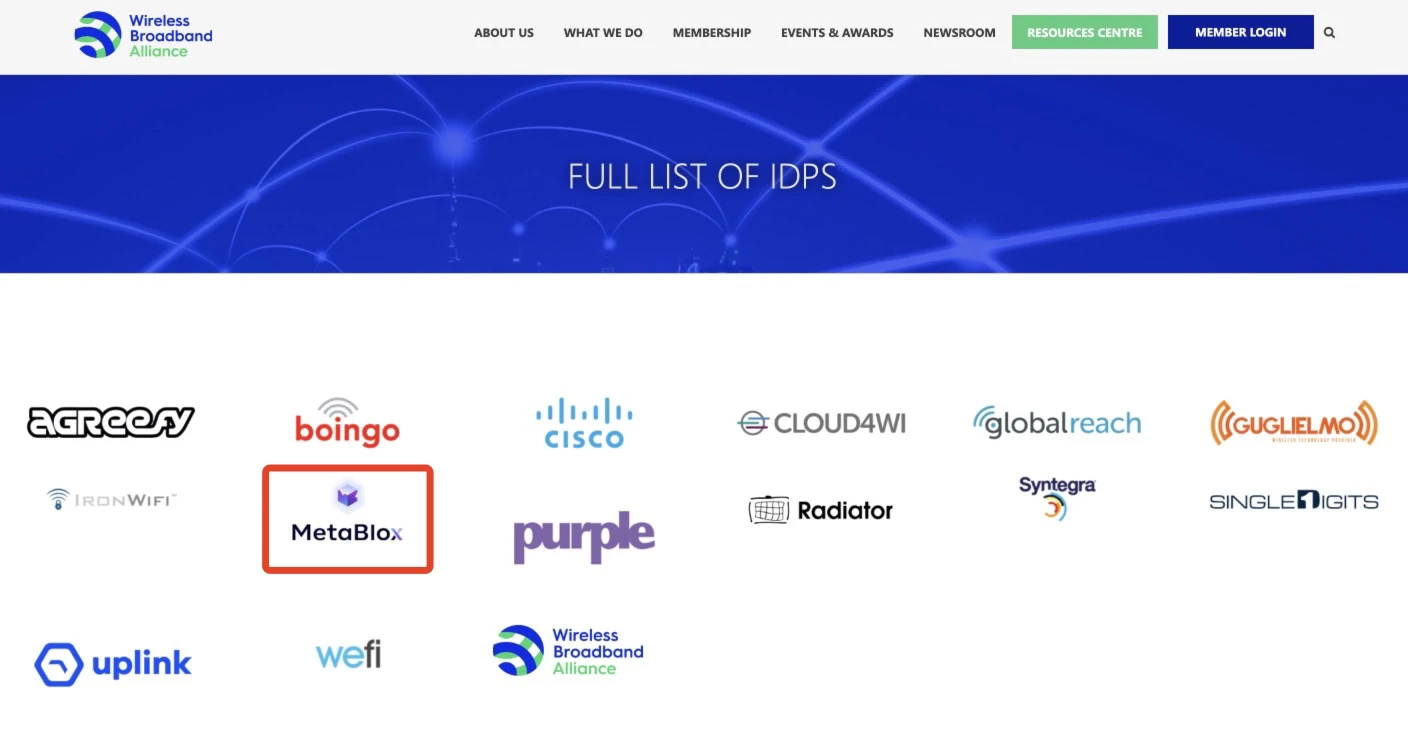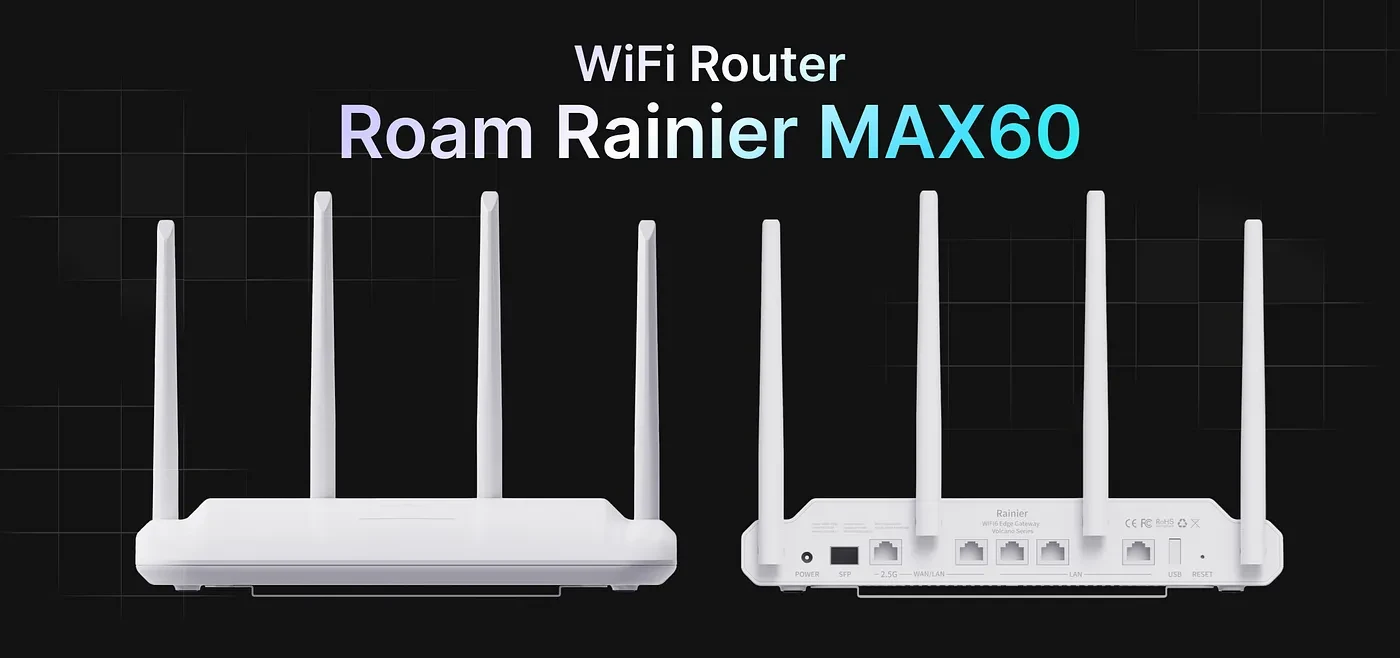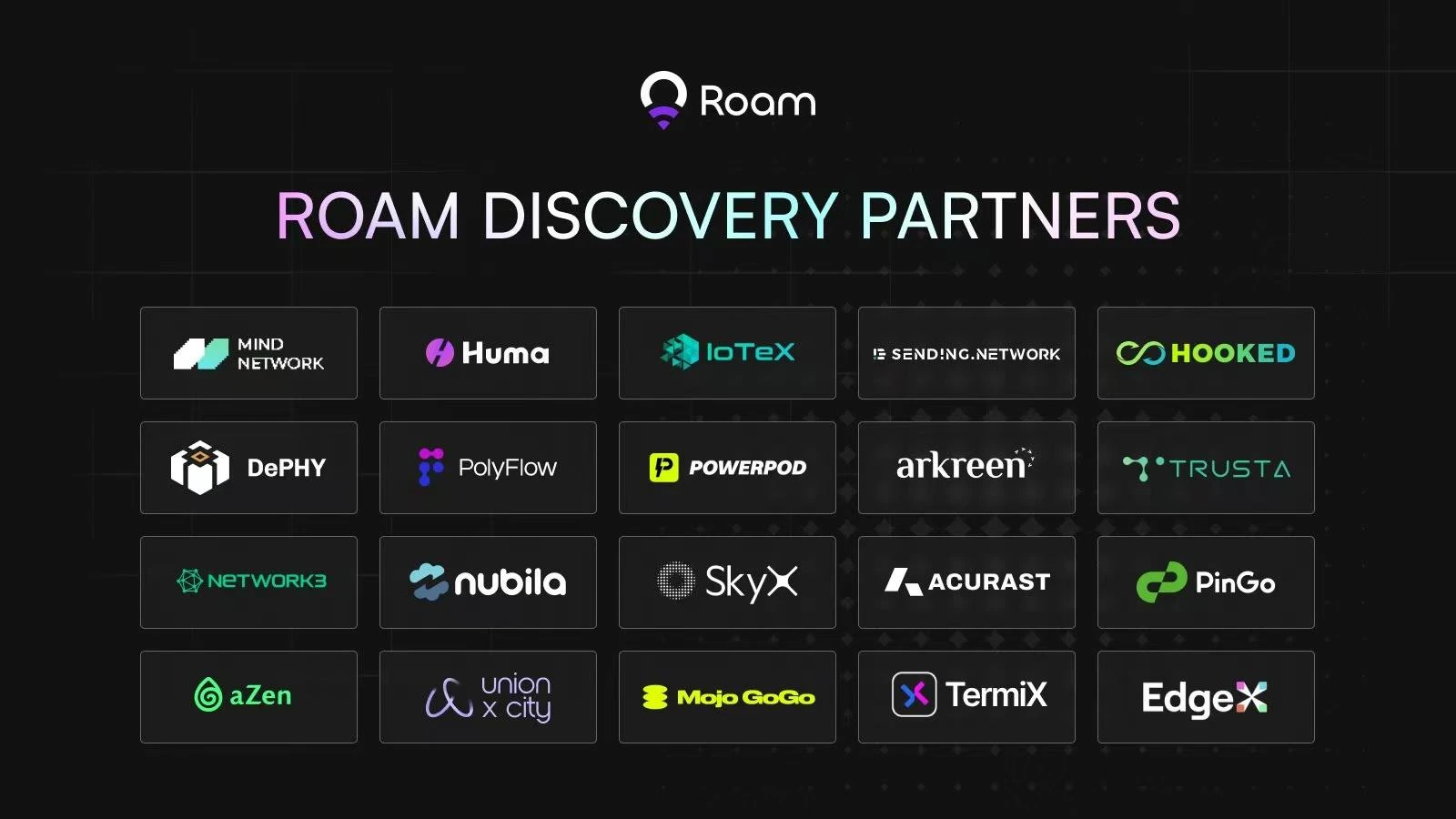Roam joins hands with Huma to promote DePIN ecosystem co-construction and win-win situation for users
As the only Web3 IDP project party among the 15 enterprise alliances of the Global Wireless Broadband Alliance (WBA) OpenRoaming™ program, Roam has always been committed to building an open global wireless network to provide users with secure and seamless network connections. Through the bottom-up, user-first Web3 model, Roam has rapidly expanded the popularity of the OpenRoaming™ program around the world. Currently, Roam has nearly 2 million registered users worldwide, the number of self-built WiFi nodes is close to 1.2 million, and it ranks first in the hardware node ranking of DePINscan, a DePIN data analysis platform, becoming a veritable large-scale Web3 implementation case.
MetaBlox, the parent company of Roam, is the only Web3 IDP project party among the 15 enterprise alliances of the WBA OpenRoaming™ program
In order to attract more users to participate in the upgrade of global wireless networks, Roam innovatively introduced Web3 technology, using DID+VC on-chain identity authentication to fully protect user privacy and open up a new path for users to participate in network upgrades. Users are no longer just users of network services, but also contributors to network optimization, and they can get incentives for every participation. This incentive mechanism has greatly improved user participation and promoted the rapid growth of the number of users and WiFi nodes.
Launched a router loan program to lower the threshold for user participation
In order to attract more users to participate in the construction of global open wireless networks, Roam and Huma Finance jointly launched the Roam Loan Program. Users only need to pay 30% as a down payment, and the remaining 70% will be provided by Huma. The loan can be repaid through airdrops and mining rewards. After the loan is settled, the equipment income belongs to the user.
Roam routers combine powerful functions with investment value, bringing multiple benefits to users. Taking Roam Rainier MAX 60 as an example, router users can get:
1) Activation rewards. Users will receive 3,000 Roam Points when they activate the device for the first time. After that, the router will generate 60 Roam Points per day. Other visitors who check in on the router will bring Roam Points rewards to its owner. This part of the reward can get up to 150 Roam Points per day for one router. Therefore, buying more routers or deploying routers in areas with high traffic will bring more rewards to users.
2) Exclusive Burning Pool. Roam’s ecosystem has a unique burning mechanism designed to balance the token economy and help maintain the value of $ROAM tokens. After the TGE, Roam will have different burning pools designed for different users. Router miners will have an exclusive burning pool. The router miner burning pool has a higher conversion rate compared to the general pool for ordinary users. This burning mechanism increases the long-term value of $ROAM tokens and improves the overall profitability of router miners.
3) Airdrop Whitelist. Roam announced during the ABS 2024 Asian Blockchain Summit that it will airdrop a total of 20 million $ROAM tokens to users who purchase various types of Roam routers and early MetaBlox NFT holders before TGE to reward them for their contributions to the early network ecosystem construction of the project. You can participate in this airdrop event by purchasing a Roam router before TGE.
4) More mining benefits. Router users will also be eligible to participate in the airdrop activities of Roam Discoverys ecological high-quality projects, and have the opportunity to receive multiple rewards including tokens, NFTs, whitelists, etc.
For example, the Rainier MAX 60 is priced at $499. Through the loan program, users only need to pay a down payment of $150, and the remaining 70% will be provided by Huma. Users will repay the loan with airdrop rewards and mining rewards from their personal Roam accounts. With the multiple benefits brought by the equipment, users can quickly recover their investment and obtain long-term and stable returns on investment.
In addition to bringing users a variety of passive income, the Roam router itself is a powerful network device. At present, Roam has officially released three devices: the first generation MetaBlox OG Miner router (discontinued), and the latest AC device Rainier MAX 60 and AP device Baker MAX 30 router launched in January this year. Both routers have excellent performance and security. Roam Rainier MAX 60 integrates Wi-Fi 6 high-speed transmission technology, providing a network speed of up to 9.6 Gbps, and can connect more than 200 devices at the same time, achieving seamless sharing in a multi-user environment. It adopts an advanced low-power design and has 2 TB of expanded storage. It is the first to support dApp applications and can run CDN, network storage, IP address-based services, AI and other dApp applications.
These routers not only meet the users low-cost needs, but are also easy to operate and can be deployed by anyone in less than 10 minutes. Once deployed, users can easily share router nodes on the Roam network to enhance coverage and reception range, providing and enjoying a smooth and efficient network connection experience.
A glimpse into Roam Discovery’s diverse ecosystem from the Roam Loan Program
This time, the cooperation between Roam and Huma also demonstrated the scenario of Roam Discovery ecological cooperation. Before the hardware loan plan with Huma was launched, Roam had just released the Discovery cooperation platform and officially announced the first batch of 20 cooperation projects, and Huma was one of them. Huma not only provides users with instant liquidity, but also brings users the opportunity to participate in the construction of the DePIN network and obtain stable income.
With the launch of the Discovery ecosystem platform, mature cooperation projects will be deeply bound to the Roam decentralized wireless network ecosystem, using WiFi nodes as the entry point to carry out ecological cooperation around a series of methods such as node value and user agreements. On the other hand, Roam Discovery will also provide innovative startup project partners with a complete set of underlying software tools based on the Roam ecosystem, WiFi node support around the world, and a large global user group, grants and community resources, thereby helping new projects complete early construction and continuously promote the development of the entire ecosystem. In the future, Huma will further utilize Roam network resources to explore more cooperation possibilities and create more profit options for users.
Continuous breakthroughs in building global open wireless networks
The launch of the Roam Loan Program marks the successful launch of the first phase of Roam Growth products. Through flexible loan installment methods, the threshold for users to purchase router devices has been greatly reduced. According to the latest news, all devices in the router loan program in cooperation with Huma have been sold out. Roam is stepping up preparations for a new batch of devices. Users can now log in to the Roam official website to make reservations.
Looking back over the past month, Roam has released a number of important updates in succession, demonstrating its determination to promote the development of the DePIN ecosystem. Roam Growth was the first to go online, focusing on DePIN network revenue and providing users with more opportunities to participate in network construction. Subsequently, Roam released the 2025 roadmap, covering six major products and 11 update plans, depicting a clear blueprint for future technology and ecological development. Among them, Roam Discovery, as part of the roadmap, was even launched ahead of schedule, providing rich development and cooperation scenarios for ecological partners.
With the launch of the first phase of Roam Growth products, the routers were quickly sold out after they went online, fully demonstrating the attractiveness and market demand of this plan. Roam continues to expand its ecological scenarios and cooperation diversity, constantly creating more network construction scenarios for users to participate in, while increasing revenue options.
Currently, Roam has nearly 2 million registered users and over 1.2 million self-built WiFi nodes. The rapid growth of these data is the best proof of Roams efforts to realize the vision of an open global wireless network. In the future, Roam will work with ecological partners to create more profit options for users, promote the continued development of Web3, and lay the foundation for the future of decentralized networks.
This article is sourced from the internet: Roam joins hands with Huma to promote DePIN ecosystem co-construction and win-win situation for users
Original title: Memecoin LP II: How I Learned to Stop Worrying and Love IL Original author: Capn Jack Bearow, Head of Berachain DeFi Original translation: Felix, PANews I wrote a post about LP costs 8 months ago, which didn’t attract much attention at the time, but the number of views on the post increased threefold yesterday, so this article re-validates this method with the latest examples. Prerequisite: In order for this method to work better, you need to deploy memecoin as early as possible, recognize that a certain memecoin has certain advantages in the medium and long term, and the trading volume must be large. The example in this article uses the BUCK token. As mentioned in the previous post , you need to set a v3 range with the…










